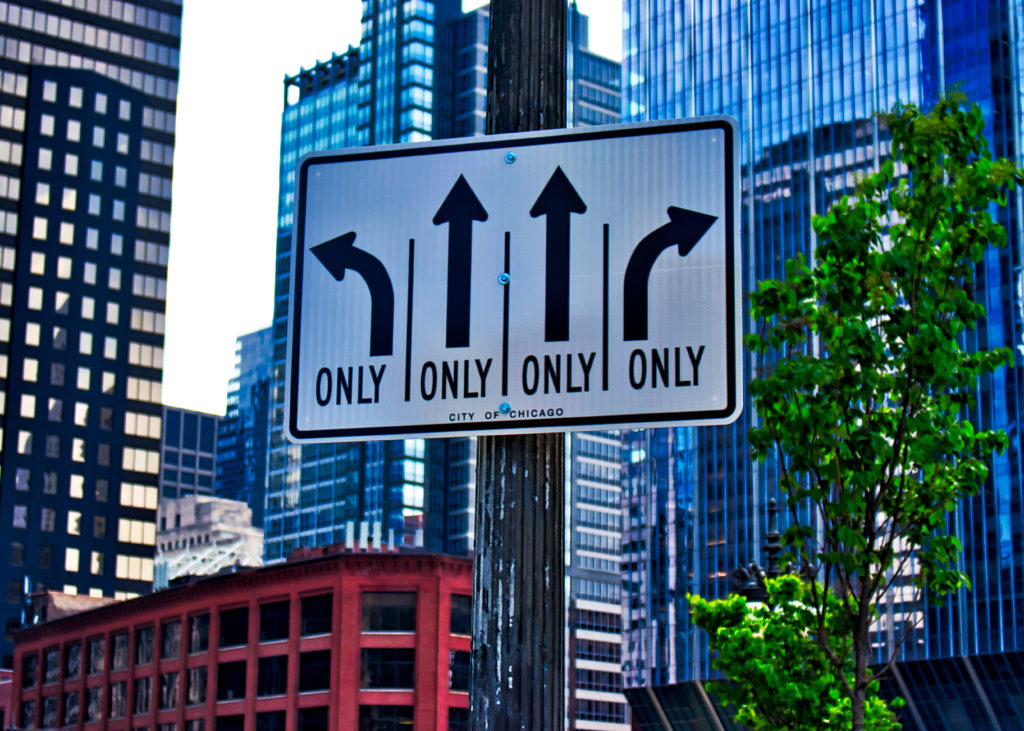
Everybody knows that green means go. Kids learn this concept in pre-school. However, every driver should know that turning left on a green light with approaching oncoming traffic requires waiting for the intersection to clear or for there to be enough space to avoid hazards before proceeding with the left turn. This rule is even stated in Illinois traffic law.
Government statistics show that crashes occur more frequently in circumstances involving left hand turns than right hand turns. The reason for this can probably be explained through commons sense reasoning. Left hand turns take longer and cover more space. Drivers often have to time their left turns to avoid oncoming traffic that also has a green light unless they are turning left at an intersection that had a traffic control light that includes a left turn only green arrow. But, even in those situations, motorists will still need to look for pedestrians crossing over the street that they intend to turn into or other vehicles disobeying the traffic signal. Obstructed views can also make left turns more challenging. Although, a good rule of thumb for those situations is to wait to turn until you can see that the intersection is clear and it is safe to turn.
Other Cars May Be Blocking Your View
When turning left, a driver’s view can be obstructed by other cars or trucks waiting to turn left from the opposite direction. Depending on how curved the road is, or how big the vehicles are on the other side of the street, a left turning driver may not be able to see oncoming traffic from his or her vantage point until those drivers make their turns or move out of the way.
Road Design Might Contribute to Obstructed Views for Left Turns
Additionally, the features of a road or intersection can make it tough for drivers to see each other. Take a street like Stony Island in Chicago, for instance. For motorists traveling southbound on Stony Island Avenue approaching 69th St. in Chicago, one factor to consider is that there are a group of trees in the center median of Stony Island just south of 69th Street. If you wish to make a left turn from S. Stony Island Avenue on to eastbound 69th Street, you have to make the turn from the designated left turn lane. When the light is green for drivers attempting to turn left, it is also green for cars coming from the opposite direction traveling northbound on Stony Island. As you approach this intersection heading south on Stony Island Avenue, you have to keep a look out for vehicles heading north on that same street if you intend to turn left on to 69th Street. You should also be aware in that situation to make sure the trees in the median aren’t preventing you from seeing any oncoming vehicles heading north.
David Struett, a reporter for the Chicago Sun Times, recently published a story about a fatal crash at this same intersection where a car that was attempting to turn left onto eastbound 69th Street collided with a motorcycle heading north on S. Stony Island Avenue. Both of these drivers had a green light at the time of the crash. The driver of the motorcycle died as a result of his injuries from this tragic incident.
How Can I Make Left Turns Safer?
For intersections where making a left turn requires looking past obstructions, either natural or man-made, and avoiding oncoming traffic, the way to make traveling easier and safer for drivers is to avoid making that left turn altogether. I understand that this may sound strange, but considering the hazards that this intersection may impose on every driver’s goal of avoiding collisions and arriving at their intended destination safely, taking another route that could include 3 right turns instead of a tricky left could be the safer option. Not to mention the potential gas savings that come from less stopping and idling that left turns require and right turns do not. Besides, if it’s safer to make right turns than it is to make left turns generally, why not avoid turning left if you don’t have to? Every driver who makes a decision to take more safety precautions on the road has the potential of making things safer for all travelers.
Reader Interactions